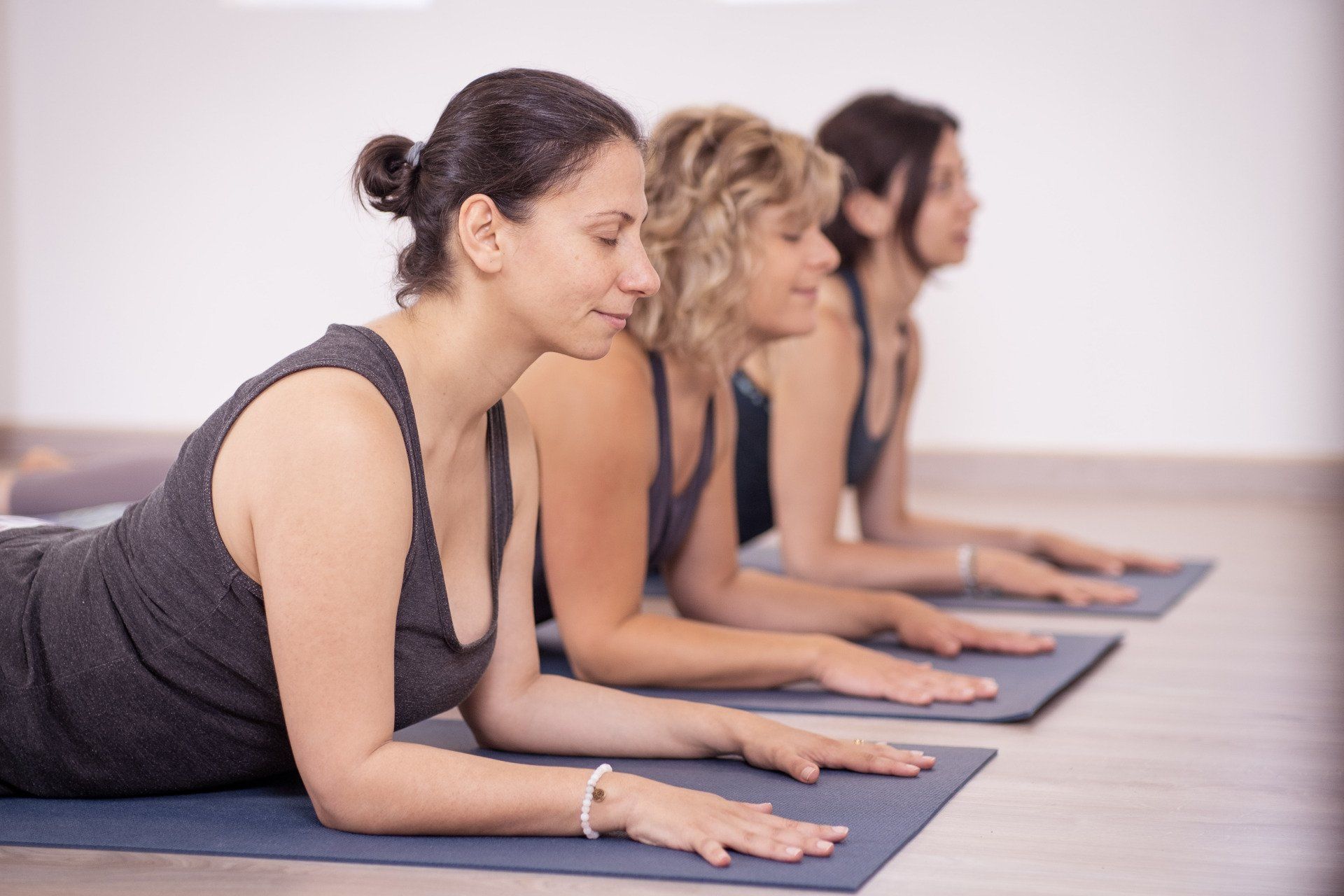Yoga Styles
Vinyasa Flow – Meditation in Motion
Vinyasa means combining Asanas – the yoga poses – with movement and breath. It can help to build muscle strength, endurance, and bone density. Furthermore, it can support the blood circulation and can reduce aches and pains in the body.
During the Vinyasa session, it is possible to progress beyond physical level and flush out negative mental patterns.
Ultimately, you may experience a meditation in motion.
You might leave this session with a calm and clear mind in a healthy body.
Hatha Yoga – the Basis of Yoga
Hatha literally means effort or force and it refers to the physical aspect of yoga.
Traditionally, Hatha Yoga starts with the poses (i. e. effort) and then works towards more subtle practices like breathing work and energetic locks (Bandhas) before finally moving to the more internal level of meditation.
In this session, you learn the correct alignment of each Asana. This way, you are prepared for joining postures together in a Vinyasa Flow.
You can develop a foundation so that you are able to practice Yoga at home in a safe way and without injuries.
Yin Yoga – the Female Side of Yoga
Yin Yoga is the female side of yoga compared to Yang Yoga, which embodies the male side of yoga (e.g., Vinyasa).
In Yin Yoga, we stay longer in a non-painful stage of each pose and observe if we can feel changes in our body, if it opens up or allows us to go deeper into the pose.
Yin Yoga can reach beyond the muscles and can bring more flexibility and life to our connective tissue such as ligaments and joints.
It uses the physical body to challenge the habits of our modern mind: rash and haste to accomplish more and more.
If you like any kind of meditation, experience shows that you will probably love Yin Yoga.
Bring a very big clean towel with yourself for Yin Yoga session.
Yin & Yang Yoga – Combining Calm and Inner Fire
Yin & Yang Yoga combines two styles of yoga into one practice: It brings together the benefits of passively holding yoga poses (Yin Yoga) with more dynamic sequences and standing postures (Yang Yoga: e. g. Vinyasa).
Holding Yin asanas for a few minutes helps you to keep your mind calm and can nourish deep connective tissues.
Yang practice can raise your inner fire, activate your muscles, and awake your brain.
The result of combing these two styles in one yoga session in a mindful way can add to a deep harmony for your body and your mind.
Gentle Yoga – Restorative Session
This session is restorative.
You won’t break a sweat but you can enjoy the connection of body, breathing, and mind in a gentle sequence of yoga postures.
This session is the best option if you like to have a gentle and meditative practice, you are tired, you have injuries, or you are coming back to your mat after a long break.
Gentle Yoga & Meditation – Connect to the Higher Self
In ancient times, the ultimate aim of all Asanas was to get prepared or being able to sit comfortably in a crossed-legged position to meditate for several days or weeks and ideally connect to the higher self (Divine).
In our meditation session (no worries, we’re not sitting for a week 😉 ), we are going through an up to 30-minute asana sequence, which prepares your body for sitting comfortably during meditation.
In the next part of the session, we meditate for up to 30 minutes using breathing techniques, body awareness, body scan, or love and kindness meditation.
Electro Yoga – A new experience
The style of this session is progressive Vinyasa.
That means we build up the sequence step by step.
You can easily remember the Asanas and at some point close your eyes and flow in a meditative mode through the sequence, as a mindfully chosen electro-music accompanies your movements: It feels like a meditative dance.
If you are completely new in the Yoga world, please start with our other Yoga sessions before you’re ready to join the Electro Yoga. That would provide you with the necessary foundations, in particular, the proper understanding of Yoga, correct alignments of Asanas and safe transitions between them.


